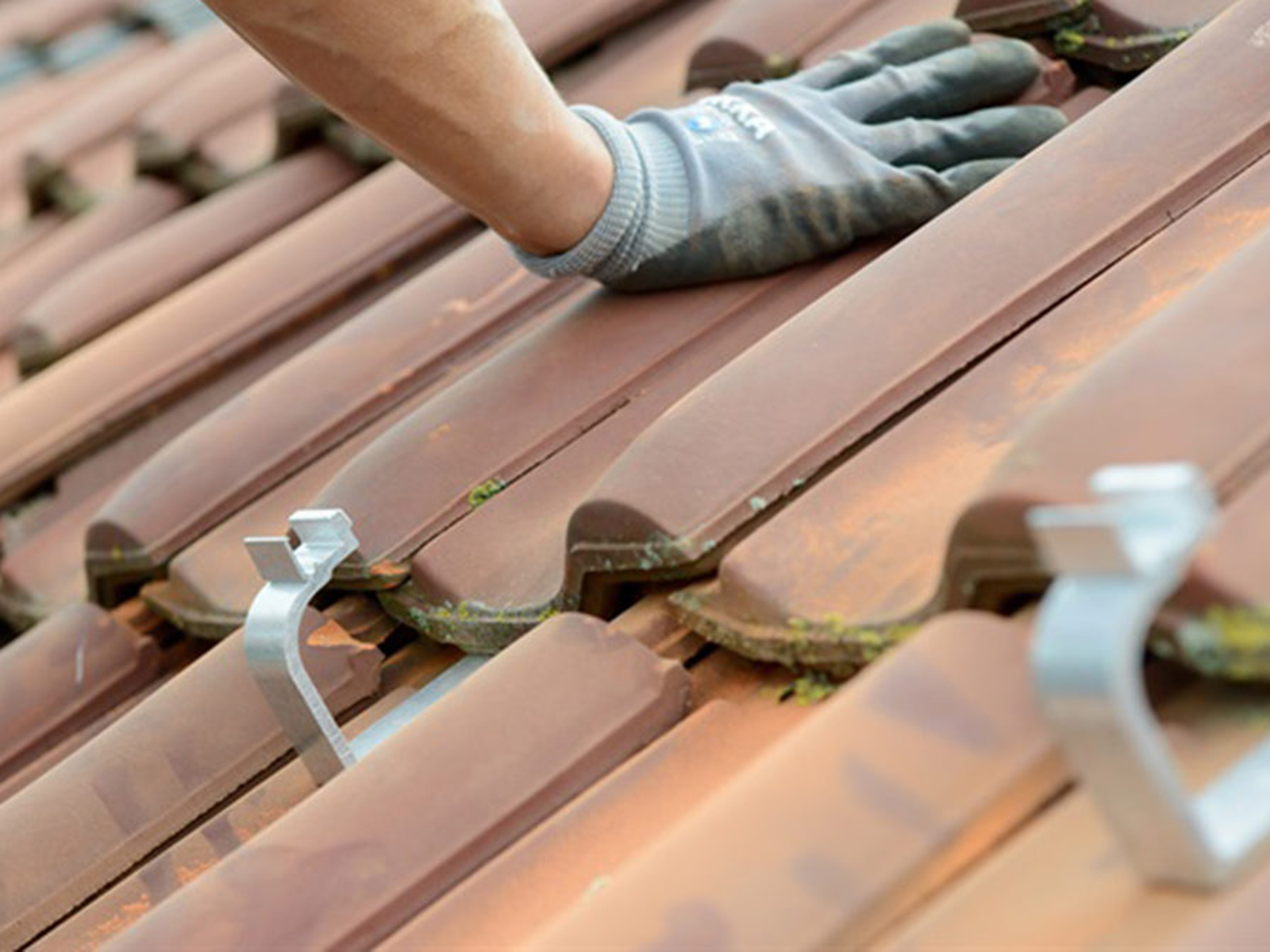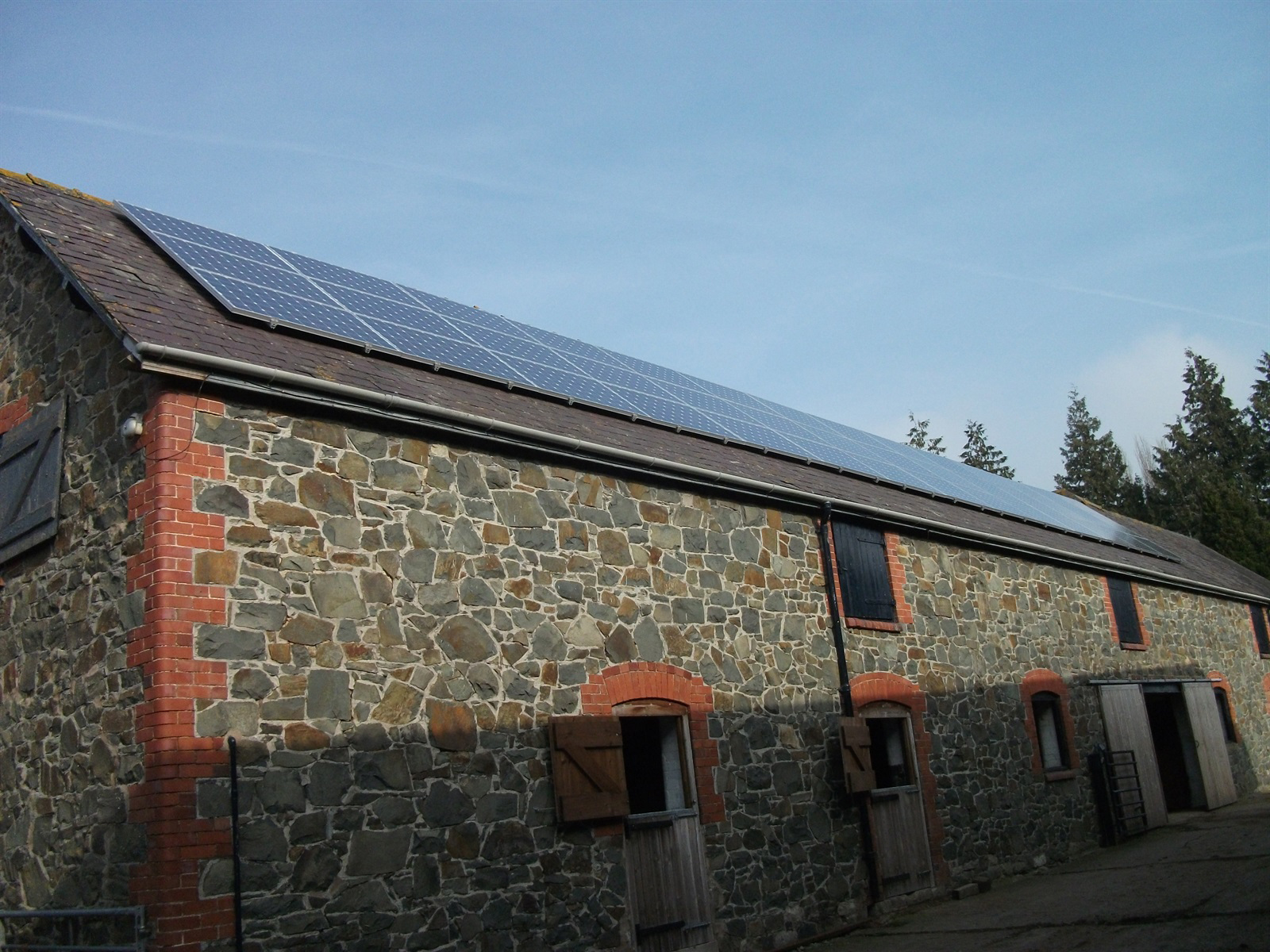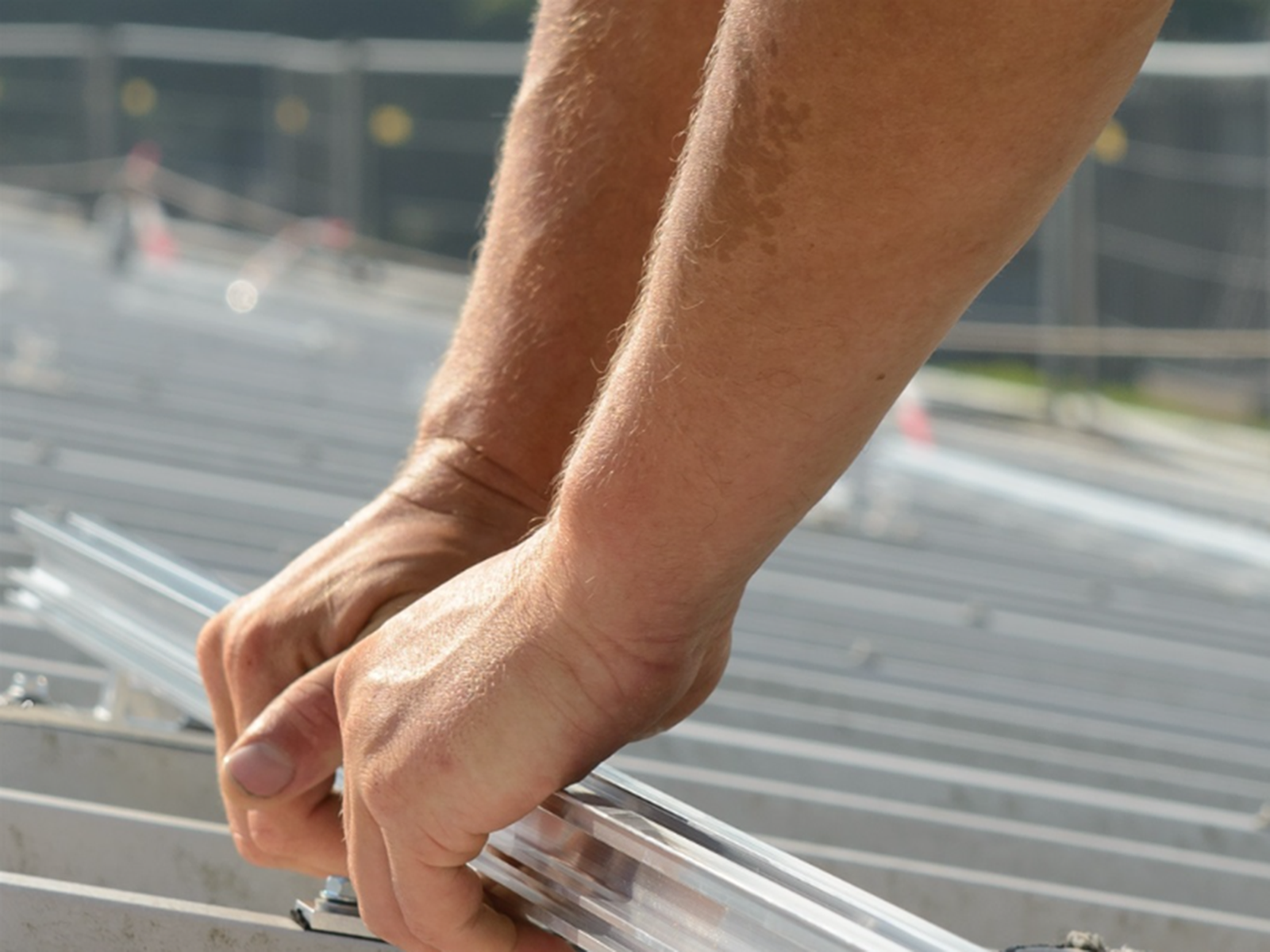ESDEC
ClickFit EVO; assembly has never been so easy
The assembly of solar modules on residential buildings is a growing market and this growth will continue in the coming years. If you regularly install solar modules on roofs of residential houses it is advantageous to have a reliable system.


THE ADVANTAGES FOR YOU
✔ Up to 40% faster assembly
✔ 4 components only
✔ Light and strong
✔ 1 single tool
✔ Up to 25 years warranty
THE ADVANTAGES FOR YOUR CUSTOMERS
✔ Iron base for solar collectors
✔ The roof remains intact
✔ Reliable
✔ Up to 25 years warranty
Click Fit for Tiled Roofs
Most of the houses in the Netherlands have roofs with roof tiles. By using the patented ClickFit system it is easier for the professional installer to install solar panels on the tile roof.
The ClickFit assembly system gets attached to the roof by means of roof hooks that are easy to install, which are attached to the batten. The barbs of the roof hooks ensure that the roof hook firmly grips onto the batten. There are height adjustable hooks available for older roofs that are not quite straight anymore. This allows for the solar panels to be aligned so that the whole gets a smooth appearance. Because roof tiles and battens have different thicknesses, there are three types of roof hooks so that a roof hook is available for each roof tile. There is no screwing or drilling into the roof, thus guaranteeing that the roof remains waterproof.
The mounting rail is simply clicked onto the roof hooks. The application of both the roof hooks and the mounting rail is easy and is done entirely without screws, bolts, nuts and tools.
The solar panels are hung onto the mounting rail by using the installation aid, so that the solar panels can be easily slid into the right place. The solar panels are subsequently screwed onto the mounting rail by using mounting screws and universal clamps. There is already a special screw thread in the mounting rail that simplifies the screwing in of the solar Panels.


Click Fit for Corrugated Roofs
Corrugated roofs are often found in barns and sheds in agriculture, livestock and industrial environments. In the past, corrugated sheets contained asbestos. The new generation of corrugated sheets are made from fibre cement or steel. It is easy to place solar panels on every corrugated roof by using the ClickFit system.
The ClickFit assembly system is attached to the roof by means of hanger screws. The hanger screws are screwed into the wood or steel purlins to which the corrugated sheets are also attached. In this way, the weight of the solar panel is not transferred to the (weak) corrugated sheet, but directly onto the roof structure. Height differences in the roof can be easily accommodated by adjusting the hanger screws. Hanger screws are available for both steel and wooden purlins. EPDM rubber provides a waterproof closure of the roof.
The mounting rail is screwed onto the hanger screws. For an optimal filling of the roof, the ClickFit system can be built up both as a single layer and as a very stable double layer system. The solar panels are screwed onto the mounting rail by means of the mounting screws and universal clamps. There is already a special screw thread in the mounting rail that simplifies the screwing in of the solar panels.
Materials and tools
The ClickFit assembly system is suitable for all brands and types of solar panels. The system is made of durable and high quality aluminium and stainless steel components.
There are special black clamps and caps for black solar panels that are placed over the assembly profile and the mounting screws. This gives the solar panels and the assembly system a complete black finish.
There is only a 10 mm socket wrench needed for the assembly of the solar panels
Click Fit for Metal Roofs
Steel roofs are often found in barns and sheds in agriculture, livestock and industrial environments. Steel roofs are often trapezium-shaped, or they have the shape of a standard corrugated sheet. Insulated steel roofs are also called sandwich roofs, because they often consist of several layers of steel with a core of polyurethane. It is easy to place solar panels on every steel roof by using the patented ClickFit system.
The ClickFit assembly system is attached to the top sheet of the roof by means of mounting brackets and special self-tapping plate screws. The special self-tapping plate screws do not chip, but displace the material of the top sheet. Additional material is hereby created in which a screw thread is tapped with this operation. Unlike pop rivets or self-tapping screws, the material does not get weakened, but rather strengthened at the position of the screw. This makes it possible to make a proper and durable connection at a top sheet thickness of only 0,5 millimetres. To make the roof waterproof, water-repellent EPDM rubber is placed between the mounting bracket and the roof.
The mounting rail is simply clicked onto the mounting brackets. The application of the mounting rail is easy and is done entirely without screws, bolts, nuts and tools .
The solar panels are hung onto the mounting rail by using the installation aid, so that the solar panels can be easily slid into the right place. The solar panels are subsequently screwed onto the mounting rail by using mounting screws and universal clamps. There is already a special screw thread in the mounting rail that simplifies the screwing in of the solar panels.


Click fit for Slate Roofs
Slate roofs are often found in old buildings, such as churches and luxurious houses. Common slate roofs are made with fibre cement slates and natural slate. It is possible to place solar panels on every slate roof by using the ClickFit system.
The ClickFit system is attached to the roof by means of slate hooks. The slate hooks get covered between the slates and are attached to the batten, the shingle or the purlin. This is specialized work, because slates are usually very fragile. Special attention should also be paid to the waterproofing of the roof.
The mounting rail is screwed onto the slate hooks. For an optimal filling of the roof, the ClickFit system can be built up both as a single layer and as a double layer system, where the double layer system is more solid and more stable. The solar panels are hung onto the mounting rail by using the installation aid, so that the solar panels can be easily slid into the right place. The solar panels are subsequently screwed onto the mounting rail by means of the mounting screws and universal clamps. There is already a special screw thread in the mounting rail that simplifies the screwing in of the solar Panels.
FlatFix Fusion
FlatFix Fusion is a revolutionary and lightweight flat roof mounting system for solar panels that can be built up in different ways in order to get an optimal solution for any flat roof. The system is designed for quick and easy mounting of solar panels on the flat roof using only a small number of components. The main components are linked to each other by means of smart click-joints. You only need one tool to mount the solar panels. This drastically reduces the time required for installation of the PV system without compromising on the quality.
Setup
The FlatFix Fusion system can be used for almost all situations involving flat roofs. The aerodynamic design allows quick and easy placement of both large and small systems with a minimum of ballast. The uniqueness of the system is that the same parts can be used to build up a classic South setup as well as an East-West or North-South setup. With the setup angle of 13 degrees, the PV system will produce a good yield for just about every orientation.
Aerodynamic and closed system
The aerodynamic and dense design protects the PV system from the adverse influences of the weather and the wind, but is sufficiently open to allow proper ventilation. Both the sides and the back of the PV system are shielded by using universal wind deflectors. This ensures low forces on the PV system and the solar panels. This improves the life span of the solar panels.
Cooling
The properties of materials are adapted such that the wind deflectors emit heat and passively allow the solar panels to cool down. This keeps the solar panels cooler than the current system by up to 5 degrees. This improves the yield of the PV system and the lifespan of the solar Panels.

